The “15-minute cities” is an urban concept that has gained popularity in recent years. These cities focus on the idea that residents can meet most of their daily needs within a 15-minute radius by walking, cycling, or taking short public transportation trips.
These cities are an innovative response to current urban challenges. In many cities, people spend long hours in traffic, leading to congestion, air pollution, and stress. Moreover, unchecked urban expansion has resulted in increased disconnection between workplaces, housing, and essential services, creating inequalities and issues of accessibility.
The primary goal of 15-minute cities is to reduce the need for long-distance travel and promote proximity. This means that residents should have access to essential services such as housing, employment, education, commerce, healthcare, and green and recreational spaces, all within a short walking or cycling distance. By shortening travel distances and promoting connectivity between different urban functions, the aim is to improve the quality of life for citizens and reduce negative environmental impacts.
To implement the concept of 15-minute cities, strategic urban planning is necessary. This involves designing mixed-use neighborhoods that integrate different types of housing, commercial areas, workplaces, and services. Density should be encouraged, but in a balanced and well-distributed manner, to avoid socioeconomic segregation and promote diversity.
Sustainable mobility plays a crucial role in 15-minute cities. Adequate infrastructure should be established to promote walking and cycling, such as wide sidewalks, dedicated bike lanes, and secure parking facilities. Additionally, it is essential to invest in efficient and accessible public transportation systems, such as trams, rapid buses, and light rail, that seamlessly connect different neighborhoods and minimize waiting times.
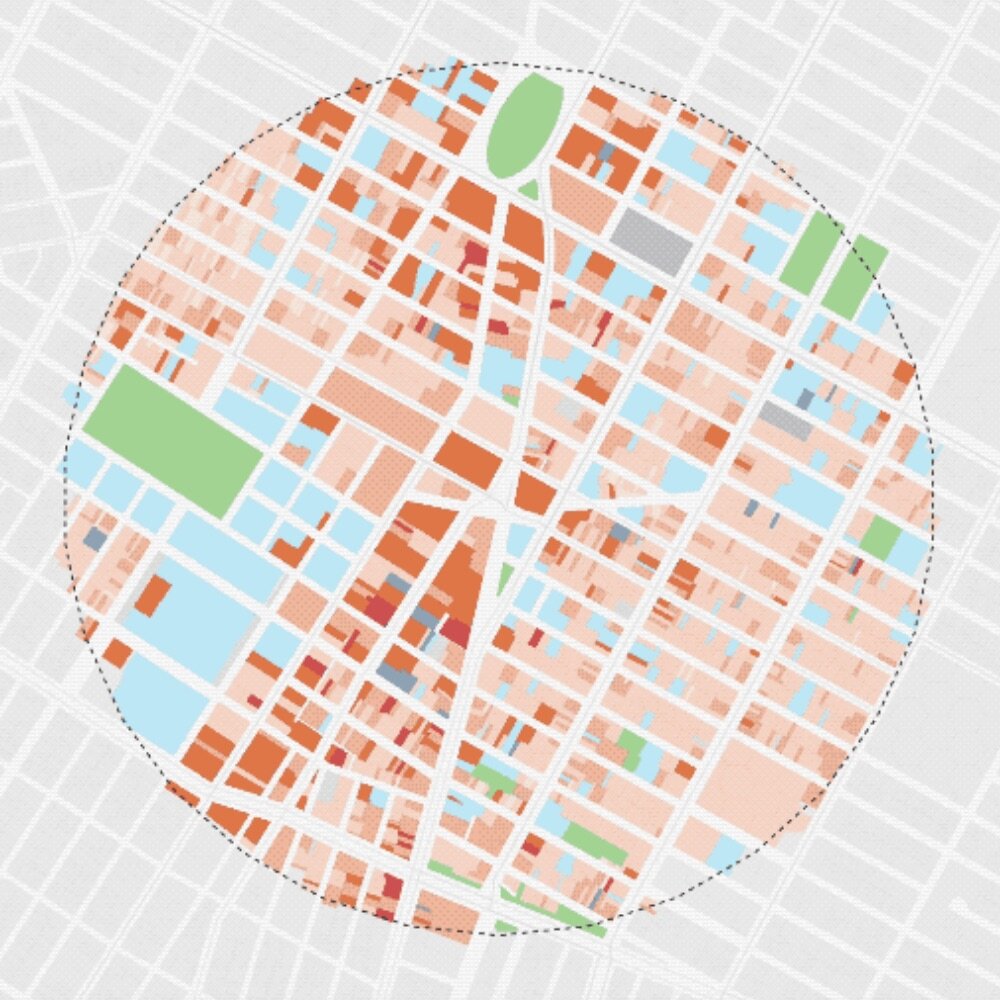
Illustration of a 10-minute walk radius, Courtesy of Morphocode
The design of green spaces and recreational areas is another crucial aspect of 15-minute cities. Parks, squares, and gardens should be strategically distributed so that all residents can easily access them. These spaces not only provide opportunities for leisure and recreation but also improve air quality and promote the health and well-being of inhabitants.
Although the concept of 15-minute cities may seem ideal, its implementation requires comprehensive planning and cooperation among various stakeholders, such as urban planners, municipal authorities, and residents. Additionally, it is important to consider the specific characteristics and needs of each city and adapt the concept accordingly.
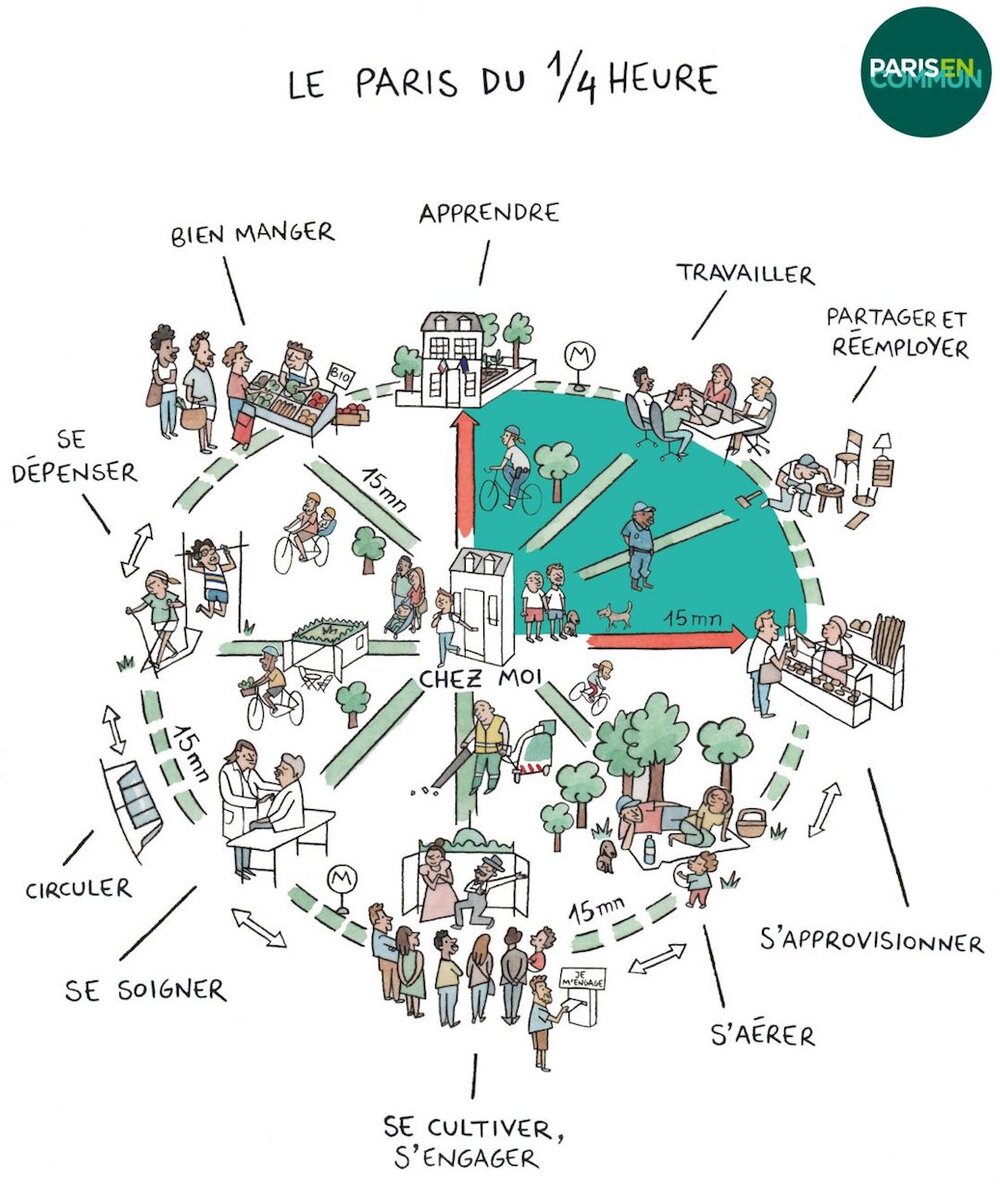
City of Paris in 15 minutes, Courtesy of Micaël Dessin and Paris in Common
Carlo Ratti, an architect, engineer, and urban designer, has been a prominent advocate for the concept of 15-minute cities. He is known for his work in urban innovation and sustainable design.
According to Ratti, 15-minute cities should intelligently integrate technology and data to optimize resources and improve efficiency. This involves implementing sensors, real-time data analysis systems, and digital solutions that facilitate the efficient management of energy, transportation, and other urban services.
Furthermore, Ratti emphasizes the importance of public spaces and the promotion of social interaction in 15-minute cities. For him, these spaces are crucial for fostering a sense of community and well-being among residents. He advocates for the creation of squares, parks, and green areas that are easily accessible by walking, cycling, or public transportation, promoting social coexistence, physical activity, and mental health.
15-minute cities represent an innovative and promising approach to urban design for the future. Under this vision, the goal is to create environments where residents can meet most of their daily needs within a short radius, promoting proximity, sustainability, and a better quality of life.
The vision of experts like Carlo Ratti highlights the importance of technology, data integration, the promotion of public spaces, and balanced planning to achieve more accessible, efficient, and people-centered cities. With this perspective, the aim is to build more connected communities with less congestion, reduced environmental impact, and a greater sense of community. 15-minute cities pave the way toward a more desirable and sustainable urban future.

15 minute city. Paris France. Courtesy of Soren Bang Clemmesen
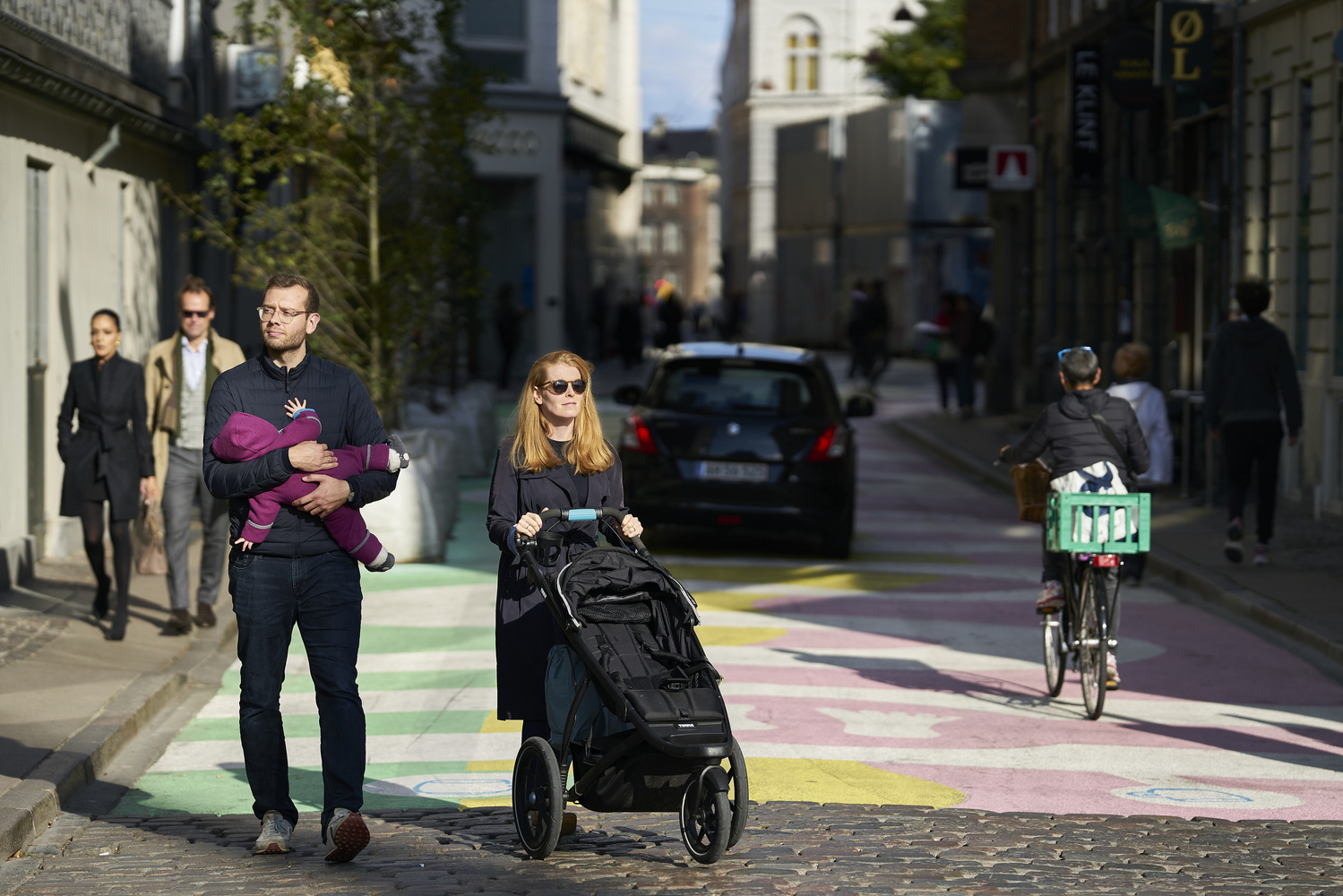
15 minute city. Copenhagen, Denmark. Courtesy of Emilie Koefoed


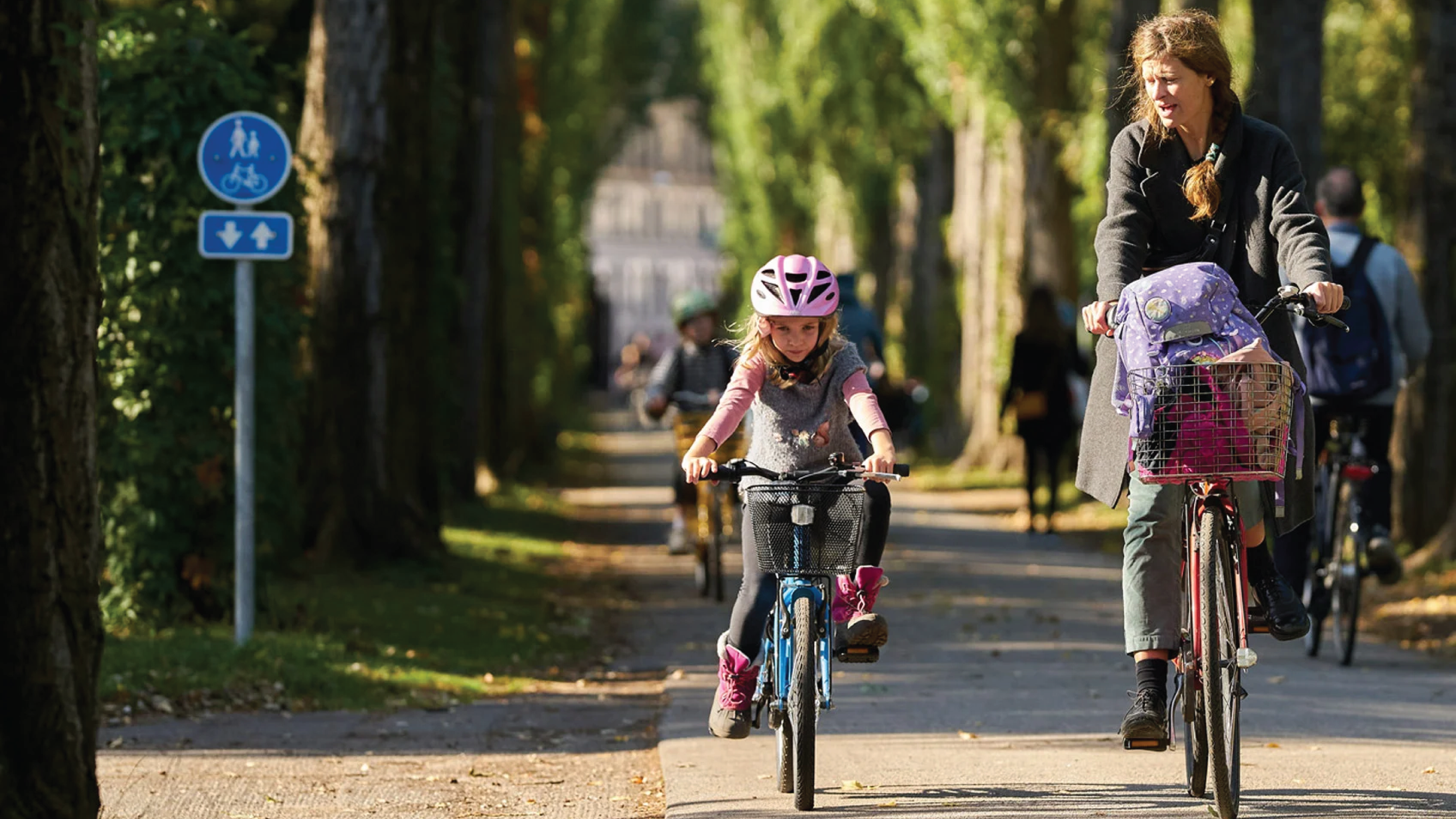
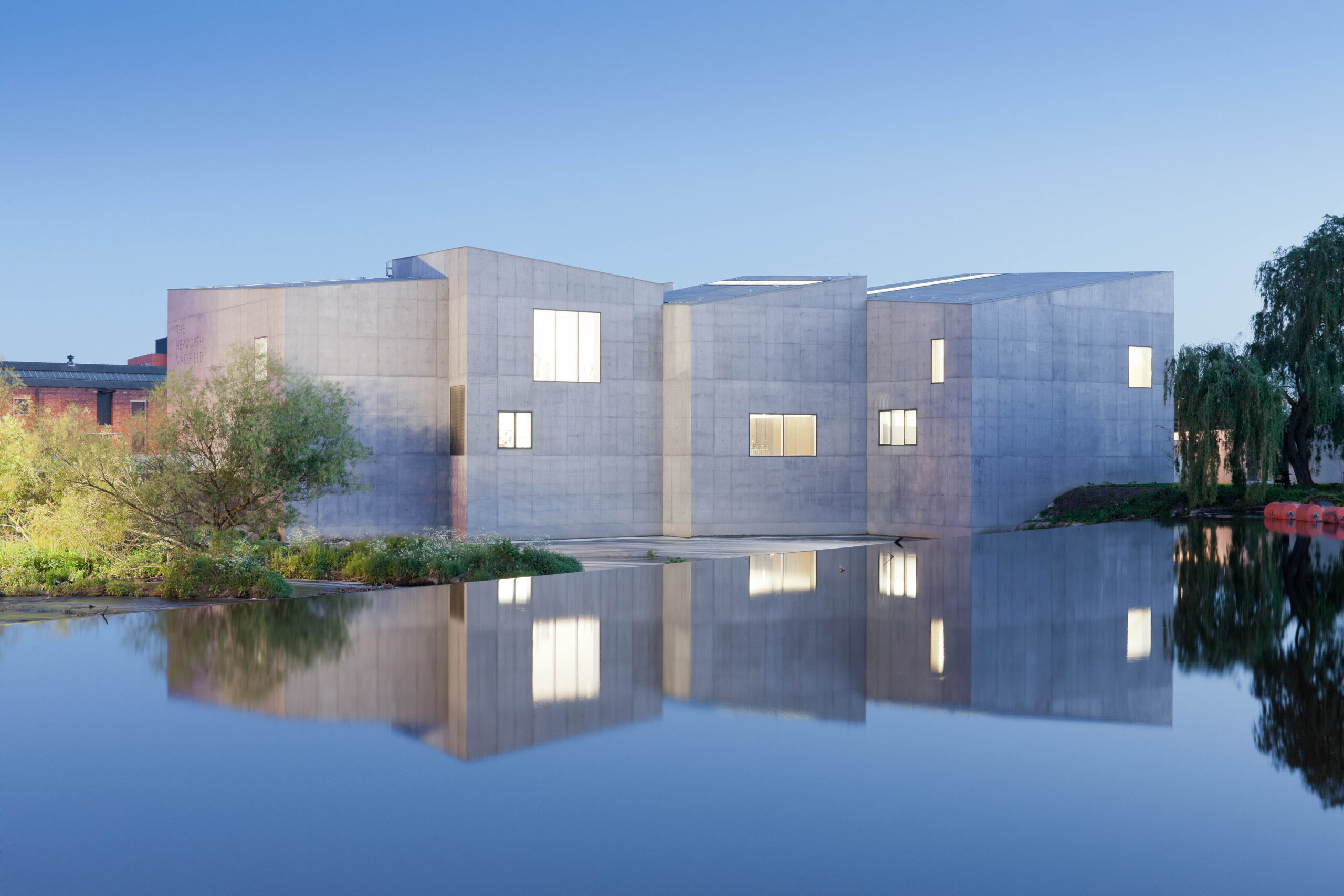
Leave A Comment